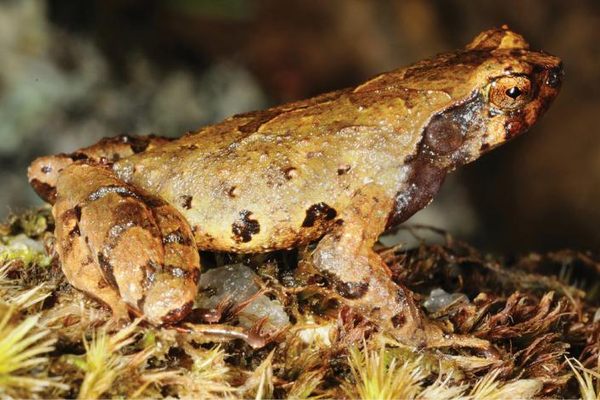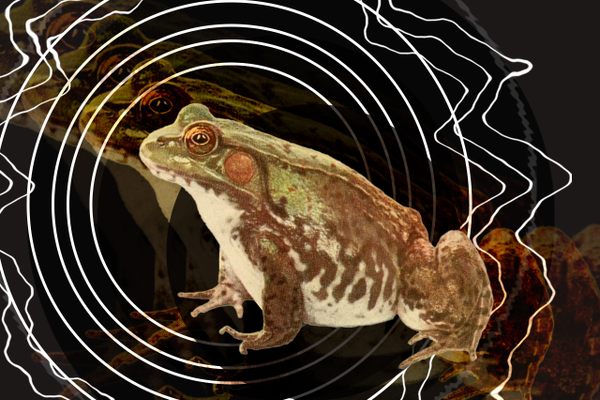Urban Frogs Make More Attractive Mating Calls
Yo! The old tale of city-frog, country-frog now has a decisive winner.

It’s a hot, steamy night in Panama’s Soberanía National Park, and a male túngara frog is looking for a date. Under cover of darkness, he throws out his best croaks, hoping one will land like Cupid’s arrow in the ear of a potential mate. Just a few miles away, in the town of Gamboa, his (relatively) urban counterparts could be having better luck.
A new study, conducted by an international team of researchers and published today in Nature Ecology & Evolution, finds that urban túngara frogs issue more complex mating calls than do their cousins in the forest, and that those calls are markedly more attractive. Indeed, a full three-quarters of female túngara frogs observed in the study preferred the urban calls, which comprise not only “whines” but also sultry “chucks”—staccato, baritone growls that, like exclamation marks, add emphasis (and maybe feeling?). Michael J. Ryan, an integrative biologist at the University of Texas at Austin and an author on the study, said that each “chuck” makes a male túngara frog five times more attractive to mates.

The researchers were already aware that, even within the same species, different animals may make different mating calls based on their location. They wanted to assess whether these differences are adaptive responses, so they orchestrated a four-part experiment. They began by recording male túngara frogs in eleven urban and forest sites, and documenting the surrounding levels of noise and light. Next, they broadcast the calls in both urban and forest environments, where they also tallied the populations of female frogs, predators such as bats, and midges (which bite frogs) in both areas. They then studied female frogs’ reactions to a variety of calls inside an acoustic chamber. Finally, they got particularly ambitious, and transferred urban frogs to forests, and vice versa, to see how they adapted their “dating profiles.”
The findings showed the female preference for huskier urban mating calls (observed in 30 of 40 female túngaras). The team also found that, after the transfer, urban frogs were able to tone down their croaking and mimic the forest frogs, while the relocated forest frogs were unable to work up the cosmopolitan chucks. Like a short, assertive “Yo!” explains Ryan, a chuck is simply more effective at grabbing attention—from mates and threats alike. This suggests that city frogs have been selected to chuck because they have fewer close-listening predators to contend with. It all makes for a complicated version of fatal attraction.
















Follow us on Twitter to get the latest on the world's hidden wonders.
Like us on Facebook to get the latest on the world's hidden wonders.
Follow us on Twitter Like us on Facebook